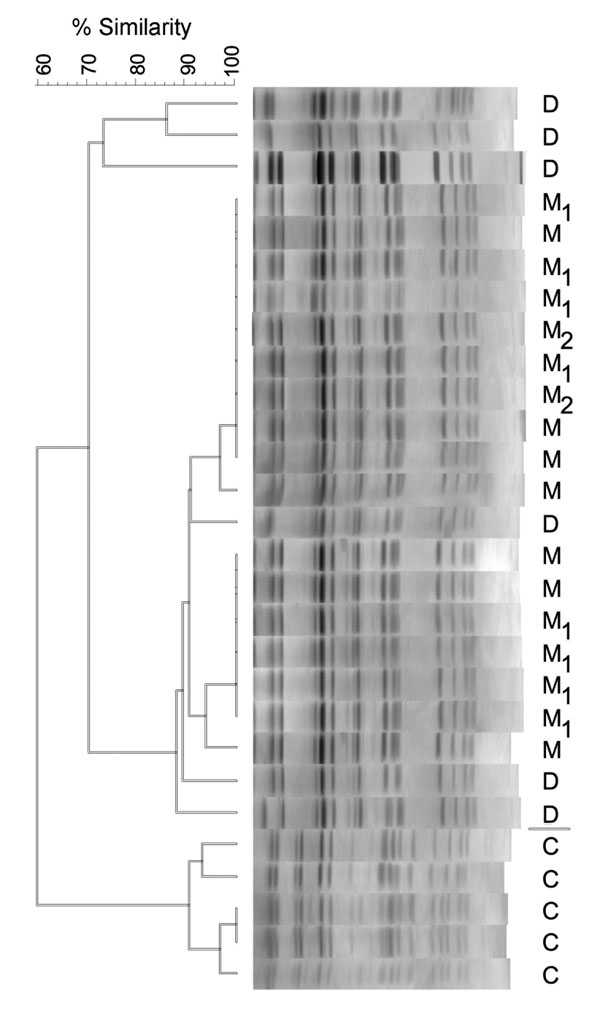Volume 15, Number 2—February 2009
Dispatch
Staphylococcus aureus ST398, New York City and Dominican Republic
Figure

Figure. Pulsed-field gel electrophoresis profiles of sequence type 398 isolates from the Dominican Republic (D); northern Manhattan (M), New York, NY, USA; and Canada (C) (provided by Scott Weese). Strains within households in which >1 person was colonized are identified numerically. The dendrogram shows the percent similarity of the isolates. A similarity >70% indicates closely related or identical strains.
Page created: December 08, 2010
Page updated: December 08, 2010
Page reviewed: December 08, 2010
The conclusions, findings, and opinions expressed by authors contributing to this journal do not necessarily reflect the official position of the U.S. Department of Health and Human Services, the Public Health Service, the Centers for Disease Control and Prevention, or the authors' affiliated institutions. Use of trade names is for identification only and does not imply endorsement by any of the groups named above.